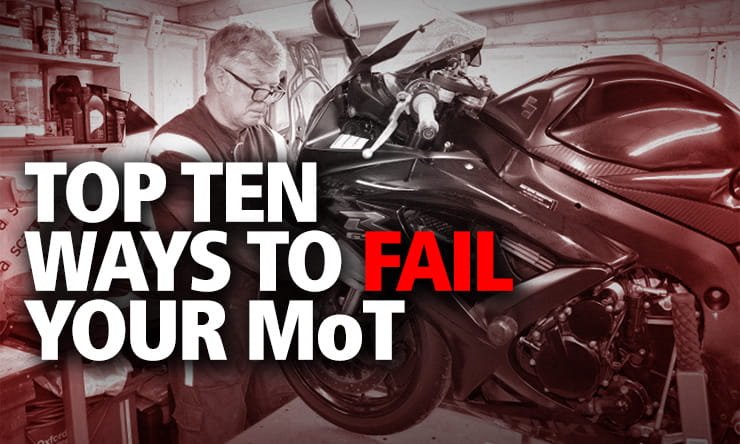Lithium motorcycle batteries can be expensive and have a shorter lifespan in extreme temperatures. These batteries may also present recycling challenges and a risk of thermal runaway if damaged.
Motorcycle enthusiasts often seek the latest advancements in technology to enhance their riding experience, and lithium motorcycle batteries are a popular choice for those looking to upgrade from traditional lead-acid batteries.
Known for their lightweight, compact size and high performance, lithium batteries can significantly reduce the overall weight of a motorcycle, providing improved handling and acceleration.
While they charge faster and typically offer a higher number of charge cycles compared to their lead-acid counterparts, riders should consider the potential downsides. The cost-to-benefit ratio may deter some, especially those who ride in very hot or cold climates, as these conditions can drastically reduce the battery’s effectiveness and longevity.
As riders, you must know the disadvantages of lithium motorcycle batteries to make an informed decision for their specific needs and riding conditions.
Table of Contents
Lithium Motorcycle Batteries
Lithium motorcycle batteries are gaining momentum in the biking world. Known for their light weight and efficient performance, they represent a leap forward in battery technology for vehicles. Riders often seek these batteries to upgrade their motorcycles but understanding their disadvantages is crucial before making the switch.
The Rise Of Lithium Batteries In Motorcycles
Much has changed since lithium batteries first appeared. Bikers globally recognize the advantages of lithium technology, from reduced weight to longer life spans. With an ever-growing focus on performance and longevity, lithium batteries have become a popular choice for motorcycle owners. They offer a significant improvement over older battery types in many areas, fueling their rise in the market.
Comparing Lithium With Traditional Lead-acid Batteries
When comparing lithium to lead-acid batteries, the differences are quite stark. Lithium batteries often weigh a fraction of what their lead-acid counterparts do and boast a longer lifespan. Despite these benefits, there are still drawbacks to consider.
- Cost: Lithium batteries tend to be more expensive upfront.
- Temperature Sensitivity: They can perform poorly in extreme cold.
- Compatibility Issues: Not all motorcycles are equipped for lithium batteries without modifications.
- Charging Requirements: Specialized chargers are sometimes needed.
Disadvantages must be weighed against the benefits of a lighter, more efficient power source. Riders should consider both sides to make an informed decision for their motorcycle’s battery needs.

Credit: www.tycorun.com
Cost Implications
The price of powering your motorcycle with lithium technology comes with significant outlay considerations.
Initial Expense Compared To Alternatives
When it comes to purchase price, not all batteries are equal. Lithium motorcycle batteries often show heftier price tags than their lead-acid counterparts.
- The upfront cost can deter bike enthusiasts from leaping traditional to more advanced battery technology.
- Lithium options could cost up to 50% more initially.
Long-term Value Versus Short-term Costs
Investing in lithium motorcycle batteries extends beyond initial expenses.
| Aspect | Lithium Battery | Conventional Battery |
|---|---|---|
| Longevity | Often lasts longer | Shorter life span |
| Maintenance | Practically none | Regular checks needed |
| Efficiency | Higher | Lower over time |
While short-term costs for lithium are higher, the long-term value must be considered. Lithium batteries offer extended lifespans and fewer maintenance needs, potentially presenting superior investment returns over time.
Temperature Sensitivity Issues
Lithium motorcycle batteries pack power into a compact size. But, they have a weakness: temperature sensitivity. This sensitivity can affect performance and longevity, especially in extreme conditions. Let’s explore how these batteries cope in various temperatures and climates.
Performance In Extreme Temperatures
High heat and cold impact lithium batteries. Here’s what happens:
- High Temperatures: They can overheat. This may lead to damage or reduced lifespan.
- Low Temperatures: Expect slower reactions within the battery. This results in poor performance.
Motorcycle riders need to know their battery’s limits. This knowledge is critical to maintain reliable performance.
Managing Battery Health In Varying Climates
Maintaining your battery’s health across different climates demands attention. Follow these steps:
| Climate | Care Tips |
|---|---|
| Hot | Store in a cool, shaded area. |
| Cold | Keep the battery insulated or warmed up before use. |
By controlling exposure to extreme temperatures, you can extend your battery’s life. Proper storage and pre-ride preparation go a long way. Always reference the manufacturer’s guidelines for optimal care.
Lifecycle Concerns
Lithium motorcycle batteries boast impressive power-to-weight ratios. Yet, their lifecycle demands attention. Longevity varies and relies on multiple factors. In this section, we explore the potential drawbacks in terms of total lifespan and factors that impact durability.
Total Lifespan
Not all lithium motorcycle batteries share the same endurance. Some may last only a few years, while others could serve for up to a decade. The total lifespan hinges on the battery’s design, quality of materials, and construction.
Factors Affecting Durability And Longevity
- Temperature extremes can shorten a battery’s life. Both heat and cold take a toll.
- Charging habits play a pivotal role. Frequent overcharging or deep discharging harms the cells.
- Usage patterns, such as regular versus sporadic use, influence longevity.
- Quality of maintenance, like timely cleaning and storage, affects durability.
Understanding these factors helps riders make informed decisions and extend their battery’s serviceable life.
Charging Challenges
While lithium motorcycle batteries offer notable advantages, charging challenges can be a real headache for riders. Unlike traditional lead-acid batteries, lithium variants demand specific care during the charging process. This not only affects convenience but also impacts planning, especially for long rides. In the next sections, we’ll explore the intricate details of these charging challenges.
Specialized Charger Requirements
Lithium motorcycle batteries require specific chargers that match their unique chemistry. Using the wrong charger can lead to decreased battery life or even dangerous situations. Most standard chargers meant for lead-acid batteries won’t suffice. This means an extra investment in a suitable charger.
- Consistent voltage and current regulation are essential.
- Chargers must have a lithium mode to prevent overcharging.
- Custom chargers add to the overall cost of your setup.
Charging Speed And Infrastructure Limitations
Speed matters when it comes to charging on the go. Many riders find lithium batteries take longer to charge than they expect. Public charging stations often aren’t equipped for lithium motorcycle batteries.
| Charging Point | Charging Speed |
|---|---|
| Standard Outlet | Slower Charging |
| Dedicated Station | Faster, but Rare |
Longer waits can put a damper on travel time. Plus, the rarity of dedicated stations further limits flexibility.
- Riders need to plan charging stops carefully.
- Traveling to remote areas can be risky without reliable charging options.
Also Read: Tire Blows Out? Learn What To Do.
Safety And Stability Considerations
Lithium motorcycle batteries offer significant performance advantages. Yet, safety and stability considerations are crucial. We must consider the risks they may carry. Let’s delve into those concerns.
Risks Of Overheating And Thermal Runaway
Lithium batteries can overheat. This is known as thermal runaway. It happens when a battery becomes too hot and can’t cool down. This heat can create a chain reaction:
- Battery chemicals break down.
- Heat rises dangerously.
- Pressure builds inside the battery.
- The battery might even catch fire or explode.
This event is rare but serious. Motorcycle riders need to be aware of this risk.
Potential For Damage And Accidents
Lithium batteries are sensitive. If they get damaged, there’s a bigger danger. A punctured or crushed battery could short-circuit. This can lead to:
- High temperatures quickly.
- Possible fires or explosions.
In a crash, a lithium battery can be at risk. Accidents can harm the battery. Riders need to handle these batteries with care.
Environmental And Recycling Hurdles
While lithium motorcycle batteries pack a punch, they come with significant environmental baggage. This section explores how these power sources pose challenges once they reach the end of their life cycle.
Disposal And Recycling Issues
Lithium batteries can’t be tossed into your bin. They need special treatment. Most places lack the facilities to handle them properly. Here’s why:
- Specialized recycling centers are rare.
- Throwing them out can lead to fires in waste facilities.
- They often end up in landfills, which is harmful.
These issues mean that improper disposal is not just bad for the environment; it poses real risks to public safety as well.
Environmental Impact Of Lithium Extraction
Getting lithium out of the earth is no small task. The process has hefty downsides:
| Impact | Details |
|---|---|
| Water Use | It takes tons of water to extract lithium, harming local ecosystems. |
| Habitat Destruction | Lithium mining can wipe out animal homes and plant life. |
| Pollution | Mining releases toxic chemicals, hurting air and water quality. |
Lithium extraction thus demands a hefty price from our planet, affecting everything from local wildlife to global water levels.
Compatibility And Integration
Lithium motorcycle batteries bring cutting-edge technology to the road. Yet, fitting them into your bike might not always be simple. Understanding the challenges is key before making the switch.
Motorcycle-specific Compatibility Concerns
Replacing a traditional battery with a lithium one demands attention to detail.
Different bikes have unique power needs. Not all lithium batteries match these.
Some models may require specific shapes and terminals that are hard to find in lithium versions.
Older motorcycles might experience charging system conflicts with newer lithium batteries.
Before purchasing, verify that the size, voltage, and amp-hours align with your motorcycle’s specifications.
Electrical System Adjustments
Switching to lithium batteries can mean altering the motorcycle’s electrical system.
Adjustments could include upgrading the regulator/rectifier to prevent overcharging.
Some bikes may need a special lithium-compatible charger, adding to the overall expense.
Consider the cost of additional parts like battery management systems for safe operation.
Capacity Fade And Storage
Understanding the Capacity Fade and Storage of lithium motorcycle batteries is crucial. Over time, batteries can lose their ability to hold a charge. This process, known as capacity fade, often occurs with improper storage. Let’s delve into the specifics of how these batteries discharge by themselves and proper storage protocols to enhance longevity.
Self-discharge Rates
Lithium motorcycle batteries, like all batteries, exhibit self-discharge. This means they lose charge over time even when not in use. Although lithium batteries discharge slower than other types, they still need monitoring. Typical self-discharge rates are about 1-2% per month. But, factors such as temperature can accelerate this.
Storage Guidelines To Prevent Degradation
To prevent premature capacity fade, adequate storage guidelines are essential. Consider the following points for optimal storage:
- Temperature: Store batteries in a cool, dry place, preferably at room temperature.
- State of charge: Maintain a charge level of 30-50% for extended storage.
- Recharge intervals: Recharge every 3-6 months to maintain battery health.
- Physical protection: Ensure the battery is safe from drops or heavy weights.
By adhering to these simple guidelines, the lifespan of a lithium motorcycle battery can be significantly extended, ensuring your ride is powered up and ready to go when you are.

Credit: waareeess.com
Weighing The Pros And Cons
- Pros: High energy density, lightweight, longer life expectancy, and low maintenance.
- Cons: Higher upfront cost, thermal instability risks, environmental concerns, and specific charging needs.
When considering a lithium motorcycle battery, the cost is one of the first factors that may deter buyers. These batteries come at a premium compared to traditional lead-acid batteries. One must also be wary of thermal risks; a lithium battery can overheat and may pose safety hazards.
Additionally, concerns about their environmental impact cannot be ignored, as lithium mining and disposal raise red flags. Finally, the necessity for specialized chargers adds to the total cost of ownership, making it crucial to consider the full investment.
Future Of Lithium Batteries In Motorcycles
The horizon looks bright for lithium batteries in two-wheelers. Technological advancements aim to tackle the existing drawbacks. Innovations in safety, longevity, and affordability of these batteries are on the rise.
Researchers are pushing boundaries to reduce risks and improve the eco-friendliness of lithium cells. The improvement in recycling methods is also making waves, offering a greener future for battery disposal.
Manufacturers are continuously experimenting with new chemistries, refining the lithium-ion recipe to enhance performance and safety. There’s a strong trend toward creating a circular economy for these batteries, to better manage their lifecycle.
With these improvements, lithium batteries could become the norm for motorcyclists seeking efficiency, power, and sustainability. The future certainly seems electric for the motorcycle industry.
FAQ
What Are The Downsides Of Lithium Motorcycle Batteries?
Lithium motorcycle batteries have a few disadvantages. They are typically more expensive upfront than traditional lead-acid batteries. Temperature sensitivity is another issue, with performance dropping in extreme cold or heat. Additionally, if overcharged, they can be prone to overheating and potentially cause damage.
How Long Do Lithium Motorcycle Batteries Last?
Lithium motorcycle batteries generally last between 3 to 5 years. However, their lifespan can be shortened if not maintained properly. Keeping them charged, avoiding full discharges, and storing them in temperature-controlled environments help prolong their life.
Are Lithium Batteries Safe For Motorcycles?
Lithium motorcycle batteries are generally safe but come with caution. They require a compatible charging system to prevent overcharging. Built-in battery management systems (BMS) help mitigate risks such as overheating and short circuits, ensuring safer operation.
Can Cold Weather Affect Lithium Motorcycle Batteries?
Yes, cold weather can significantly affect lithium motorcycle batteries. They tend to lose power and efficiency in low temperatures. To ensure optimum performance, it’s advisable to keep the battery warm before use and store it in a temperature-controlled environment when not in use.
Bottom Line
Lithium motorcycle batteries have their drawbacks. They demand a heftier initial investment and specialized chargers. Temperature sensitivity and a strict deep discharge limit also pose challenges. It’s important to weigh these cons against the pros before making your choice, ensuring your ride’s performance aligns with your expectations and budget.




Leave a Reply